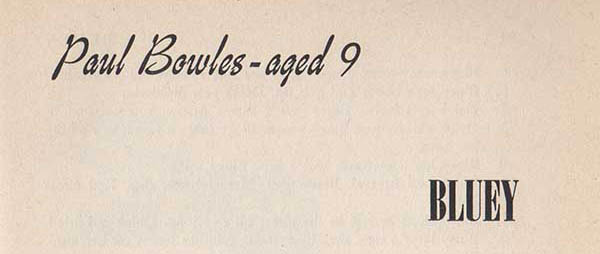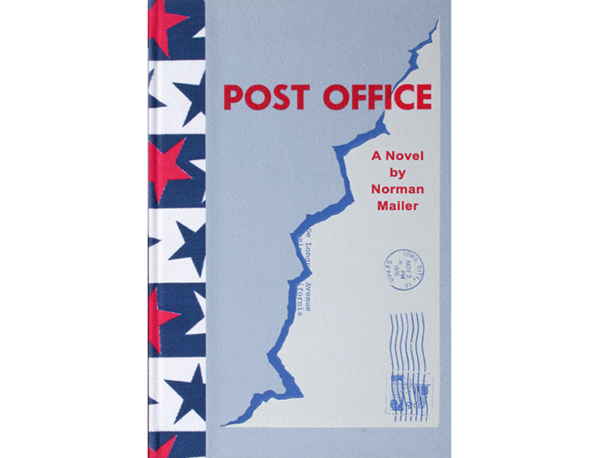How Did Europe Arrive At Futurism? : A Convulsive History of Art & Culture Previous to the Emergence of the Historical Avant-Garde
From one extreme…
The 18th Century: The Age of Enlightenment
Bach “Cantata 29 Sinfonia” (1708)
Nobody ever saw a dog make a fair and deliberate exchange of one bone for another with another dog. Nobody ever saw one animal by its gestures and natural cries signify to another, this is mine, that yours; I am willing to give this for that. When an animal wants to obtain something either of a man or of another animal, it has no other means of persuasion but to gain the favour of those whose service it requires.
–from Adam Smith’s The Wealth of Nations (1776)
A Conversation on Literary Translation with Elizabeth Harris
A few weeks ago, Elizabeth Harris contributed a brief comment to one of Lily Hoang’s posts. Her name was familiar to me because I had been reading Dalkey Archive Press’s Best European Fiction 2010, for which she contributed a translation of Giulio Mozzi’s “Carlo Doesn’t Know How to Read.” I hoped for once not to miss the opportunity to engage an interesting visitor in a conversation that might be interesting to HTMLGiant readers. She graciously agreed to answer a few questions about her work as a literary translator, and about the broader culture of literary translation in the United States.
Harris teaches creative writing at the University of North Dakota. She has translated fiction by Mario Rigoni Stern and Fabio Stassi, and she is currently translating Giulio Mozzi’s story collection, Questo e’ il giardino (This is the Garden) and Marco Candida’s novel, Il diario dei sogni (Dream Diary). Her translations appear or are forthcoming in various journals, like Words Without Borders, The Literary Review, Agni Magazine, The Missouri Review, and The Kenyon Review. Her translation of Candida appears in Best European Fiction 2011.
How did you get involved in literary translation?
I slipped into translation accidently. I studied Italian in college and loved it and kept studying it after I finished college and was working as a cook in St. Paul. I just kept taking classes in Italian. Then, I was preparing to go to Johns Hopkins for creative writing and everyone had to take a language exam; I translated Italo Calvino’s Marcovaldo all summer long, got very distracted/excited by it and thought, “Wouldn’t it be great if I could find a place to study THIS?” READ MORE >
Matt Bell’s Catalog of Structures
 I admire the way the stories in Matt Bell’s How They Were Found tackle so many forms. Here is a list of those forms, superficially described:
I admire the way the stories in Matt Bell’s How They Were Found tackle so many forms. Here is a list of those forms, superficially described:
“The Cartographer’s Girl” — a cartographer’s map key as prompt for story fragments
“The Receiving Tower” — nineteen-part structure, which ascends like the tower at the story’s center
“His Last Great Gift” — two-hundred “revealments,” some of which are given directly
“Her Ennead” — nine reflections on the repetition “her baby”
“Hold on to Your Vacuum” –nine chronologically linear “turns” (the one variation is a “not turn”)
“Dredge” — twenty-five chronologically linear crots in close third person on a single character (this is the most “conventional” story in the book, and also perhaps the most emotionally impactful)
“Ten Scenes from a Movie Called Mercy” — ten scenes from a movie called Mercy READ MORE >
Maggie Nelson Roundup
1. The book is all there is, and it doesn’t matter who wrote the book. The text is the text and has no relationship to anything outside the text. What’s outside the text doesn’t matter. All that matters is what’s inside the text.
and/or:
2. This book is so interesting that I have come to believe that the writer of the book is very interesting. I want to read the writer’s other books, and I want to know about the writer and read interviews with the writers and find out what the writer has said about herself.
 This second impulse is amplified when the book is confessional or obsessive or in some way different from other books you’ve read. Maggie Nelson’s Bluets is all three of those things. It’s a hybrid of essay and prose poem which starts as a meditation on the color blue, but ends up being about almost everything. If you look at a thing to which you’re drawn closely enough, the book seems to be saying, all your other important attachments will rise alongside the meditation about the thing you’ve taken as your subject.
This second impulse is amplified when the book is confessional or obsessive or in some way different from other books you’ve read. Maggie Nelson’s Bluets is all three of those things. It’s a hybrid of essay and prose poem which starts as a meditation on the color blue, but ends up being about almost everything. If you look at a thing to which you’re drawn closely enough, the book seems to be saying, all your other important attachments will rise alongside the meditation about the thing you’ve taken as your subject.
READ MORE >
The Adventures of Bluey and the Childhood Writings of Paul Bowles
“Drugs, bigamy, desertion, lawsuits, the plague: these are hardly the elements one expects to find in the writings of a nine year old.”
—Christopher Sawyer-Lauçanno, biographer of Paul Bowles
When Paul Bowles was 9 years old, he created a diary that documented the adventures and pitfalls of imaginary characters who went on wild journeys and were continually surrounded by death, disease, chaos, and crisis—all of which were conveyed by little Paul in a tone that is eerily mute, terse, and affectively stunted while also being intellectually sophisticated and highly developed in terms of narrative. The 3rd person diary entries have a strange and disturbing quality to them—we immediately pick up on Paul’s obsessive preoccupation with names (characters, places), numbers, measurements, etc. In the entries, Paul invented, among other things, a drug called “postage hypodermic” and a plague called the “Green Horror” (“Marshelle gets Green Horror. Marshelle dies of Green Horror…. Dukol Whitman dies of Green Horror….”). We also get a sense of the way he was trying to emulate the adult world and—in doing so—revealed its utter absurdity. I can’t get over how evocative and fascinating Paul’s childhood writings are—and to think that he had to pen them in secrecy, fearing the disapproval of his father, who once beat him and took his journals away for 2 months when he was caught scribbling.
Below the cut is a brief excerpt from Paul’s childhood narrative, which consists of over 450 entries in total. This particular passage, which was published by surrealist literary magazine View, deals with the mishaps of Bluey Laber Dozlen, who travels to Wen Kroy (“New York” spelled backward) from an unknown European city.
READ MORE >
Bernhard, etc.
 There have been several mini-posts on this site about Thomas Bernhard this week. One of our readers, Jonathan Callahan, pointed me toward an essay he wrote in the Collagist about Bernhard, Kafka, what he calls phrase-level and sentence-level virtuosity, reading in translation, and more. It’s an essay in the active Montaignian sense rather than the write-to-thesis sense. Probably someone here has linked to it before, but even if so, it deserves another look. Here’s an excerpt:
There have been several mini-posts on this site about Thomas Bernhard this week. One of our readers, Jonathan Callahan, pointed me toward an essay he wrote in the Collagist about Bernhard, Kafka, what he calls phrase-level and sentence-level virtuosity, reading in translation, and more. It’s an essay in the active Montaignian sense rather than the write-to-thesis sense. Probably someone here has linked to it before, but even if so, it deserves another look. Here’s an excerpt:
Maybe it’s best to begin by considering what it actually means to achieve effects on the reader at either of these levels. “Phrase-level” effects, as I conceive of them, reflect the writer’s scrupulous attention to individual words and his meticulous shaping of these words into the little phrase sculptures we tend to associate with writing that’s lauded as anything from “lyric” or “beautiful,” to “startling” or “uncanny” (or maybe in some quarters dismissed as “opaque”). There are all kinds of phrasal effects available to the rigorous writer, of course, and writers variously adept at making use of them compose a long gamut that runs from, say, the saguaro-like jut of certain singular phrasings in the stories of Denis Johnson and Amy Hempel, Gary Lutz and early Sam Lipsyte, through the quilted prose-poems of Michael Ondaatje or Anne Carson, into Don DeLillo’s uncanny, disorienting hyper-precision, the entrancing syllabic cadences and capering puns to be found in Martin Amis (by way of Nabokov) or Donald Antrim’s alliterative, consonance-rich lilt, all the way through the lingual looking-glasses conjured in the works of Donald Barthelme and Ben Marcus—but the common element is a kind of lexicalmanipulation. This is where the writer rejects the easy, familiar, or prefabricated phrase, vigorously resists the stale and timeworn, dismantles easy idiom, dispenses altogether with overused figures of speech, and not infrequently is forced to discard reams of what he ultimately deems superfluous or weak.
Here’s the rest: “Some Thoughts that Begin with Kafka and Bernhard but Wind up Straying Pretty Far Afield” at The Collagist.
assist
This semester I teach a service learning creative writing class. I am excited and anxious (first time I’ve taught the class). “Service learning” palms a galaxy of definitions. Here is mine, as I’ve been thunking on it:
1. You must have a focus. I do. Empathy at its core, and I might write more expansively here later about this complex idea (and the word empathy itself), but my concept includes a literature list, books, excerpt readings, the power of writing, to show, to act as an actual social tool. Like a hammer. Seriously: Like a hammer.
2. You must engage with the community. Feet on ground, ass in seat. We will. The students will meet a minimum of 7 times—in one semester–with their community partners. We will create a print anthology and give a public reading, in a space OFF university grounds.
3. You must reflect. Why even do this? It’s not enough to say, “it’s a good thing”, “giving back” “whatever cliché.” Blar. I think the class, for the students, is pretty meaningless without serious reflection on the process, or why community work is even important, or why we might want to even talk/walk with someone not ourselves. So what? Always a great question. I want the students to answer me when I kindly and firmly ask, “So what?”
Anyone taken one of these classes? Taught one? Any advice? I’m not jesting—I haven’t done this. Any exhortation, forewarning, steer, 2.4 cents worth? What is service learning to you? Our model is, as writers with CW writerly skills (many prerequisites to take this class), to “tell” the stories of marginalized populations. The writers and partners meet to tell the community partner’s story (one or many), in a poem, story, or essay. Is that the best way? What do you think?
The New Yorker: No Girls Allowed?
Anne Hays reads The New Yorker and she recently noticed that most of the articles, stories, poetry and essays in the past two issues were written by men. She wrote an open letter to the magazine wherein she discussed her concerns. I did not notice the gender discrepancy in recent issues because, to be honest, I’m reading issues from like May 2010. It’s pretty stressful how that magazine keeps showing up in the mailbox every week. There is a lot of pressure to keep up.
Boredom 2010
The other day I found myself waiting, and beside my waiting self was a newspaper. I looked at it. Of course, it was full of important stories about important people doing important things, and it would have been good of me to read about something of worth, but the only article I read the whole way through was one about a group of ‘Boredom Enthusiasts’ in London who had a conference last month. I have no idea why I was compelled to read about Boredom 2010 organizer James Ward‘s tie collection, which, as of June 2010 consisted of 55 ties, nearly half of which were solid-colored. “By December, his tie collection had jumped by 36%, although the share of single-color ties fell by 1.5%.” I must be channeling my inner Brit.
Only a day or two later a friend emailed me to ask if I had any favorite novels in which absolutely nothing, or almost nothing, happens. Oddly enough, none came to mind. I think this may be because I am often compelled by what may bore others and my definition of ‘nothing’ can be quite fluid depending on attention span or mood.
Of course there are the books about which people complain about nothing happens (High schoolers, I am looking at you.) The Old Man And The Sea is one but I am sure others (htmlgiant readers) might not categorize it in quite the same way. In David Markson’s Reader’s Block a different kind of nothing is happening, one in which an old man’s brain is sifting thoughts… Is it just me or do old men feature prominently in books about nothing and boredom? Makes it all the stranger that James Ward, mastermind behind Boredom 2010, is only twenty-nine. Someone cue the hand-wringing about the current generation.






